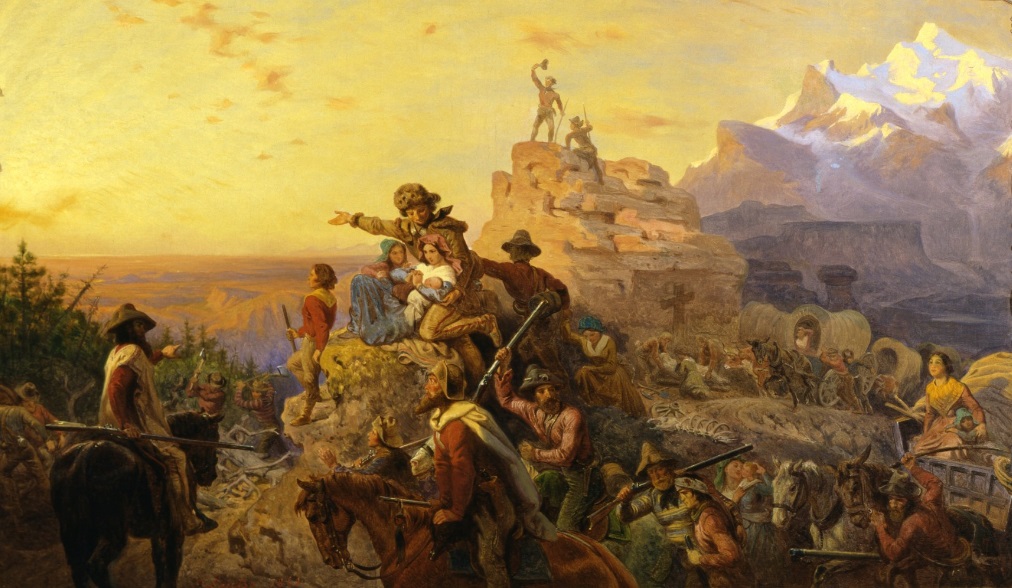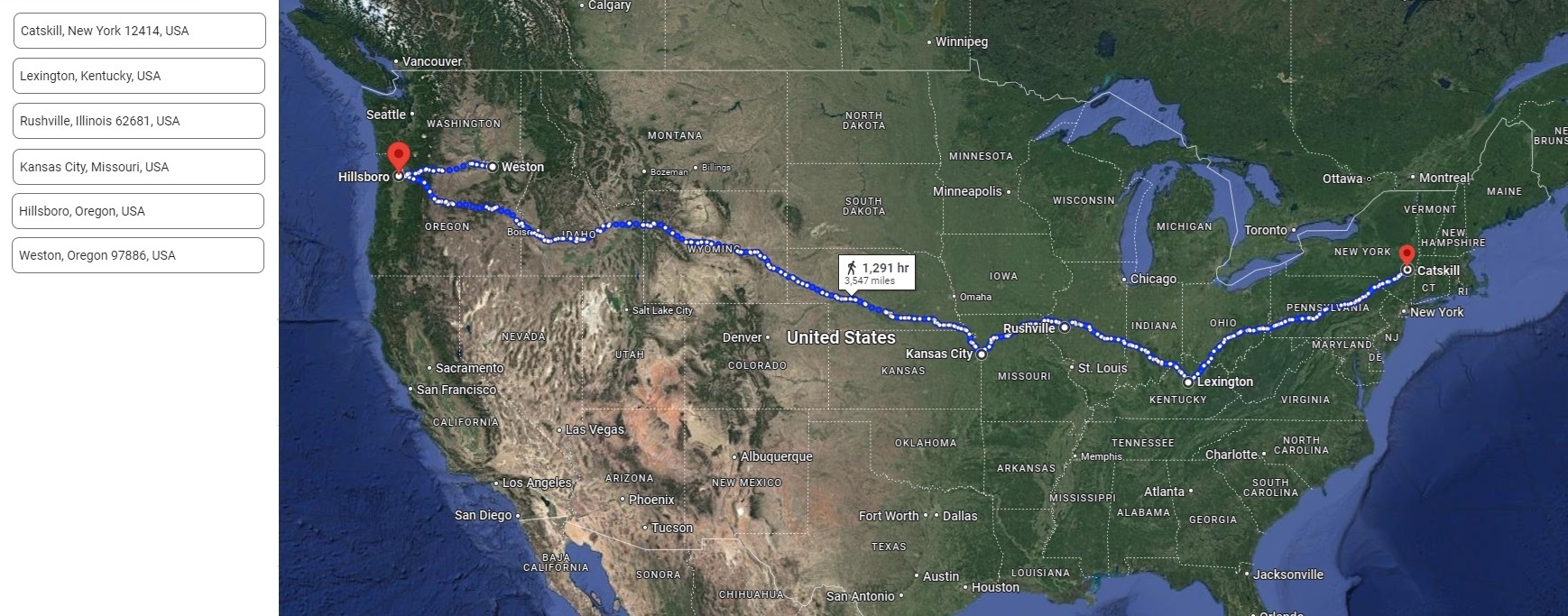|
|
|
|
Emanuel Gottlieb Leutze, Westward the Course of Empire Takes Its Way (1861)
|
Going DeeperThe following links will help you widen your knowledge: The Oregon Trail - History.com
YouTube Westward expanions in maps - simple overview introduction Why people went west - the dream Manifest Destiny - Mr Cloke: includes a good explanation of Leutze's Westward the Course of Empire |
|
On 22 May a train of 120 wagons and 875 people left Independence, Missouri, for Oregon – the Great Oregon Migration of 1843. In 1849 perhaps 80,000 '49-ers' travelled West to California.
Ultimately, there were as many reasons for going west as there were people going west, because each migrant had their own reasons for doing so, but here is a list of some general reasons historians have suggested why Americans moved west in the 1840s:
Some people moved multiple times, moving west as the Frontier moved. David Lenox (see Sources A and B) was born in New York State; at 18, he moved 750 miles to Kentucky; at 27, 420 miles to Illinois; at 38, 300 miles to Missouri; at 41, 1,800 miles to Hillsboro, Oregon; and at 68, 250 miles inland to Weston, Oregon.
Source B
Following the Frontier: the homes of David Lenox, 1802-74 (right-click to see a larger version of the map).
|
Source AThe excitement in connection with the settlement of Oregon was stirring the hearts of the pioneers on the Mississippi frontier... One Saturday mnorning father said that he was going to hear Burnett talk about Oregon. Mr Burnett hauled a box out on to the sidewalk, took his stand upon it, and began to tell about the land flowing with milk and honey on the shores of the Pacific. He told of great crops of wheat whch it would be possible to raise in Oregon, and pictured in glowing terms the richness of the soil and the attractions of the climate, and then with a little twinkle in his eye, he said, ‘and they do say gentlemen, that out in Oregon the pigs are running about under the great acorn trees, round and fat, and already cooked, with knives and forks sticking in them so that .you can cut off a slice whenever you are hungry’. Edward Henry Lenox, 1842 Edward Lenox's father David (who was a farmer and school-teacher) signed up and the family moved to Oregon. David Lenox became one of the leaders of the wagon train, organised the first Baptist Church in Oregon, and became a Justice of the Peace and judge. Peter Hardeman Burnett was a small-time lawyer and failed shop-keeper with $15,000 of debts, six children and a seriously ill wife. In 1842, in his own words, he "set to work most vigorously to organize a wagon company", and was elected as its captain when it set off in 1843. Having moved to Oregon he got into politics, became a Judge of the Provisional Government of Oregon and, in 1849, the 1st Governor of California.
|
|
Consider:1. Textbooks are desperate to get you to appreciate that there were some 'Push' factors which led people to want to leave the east, and that there were 'Pull' factors which attracted them to go west. Divide the list of reasons-why-Americans-went-west into 'Push' and 'Pull' reasons. 2. Read the cases of David Lenox and Peter Burnett in Source A. Which of the different reasons why Americans went west best applies to their stories? 3. I think it is clear that pressures had been building in the years before 1843 and 1849, but in both cases there was a 'trigger' that unleashed the rush; find those triggers. 4. I don't think that the Great Migration
of 1843 can be wholly explained in terms of a reasoned response to push and
pull factors. There was something more, something not merely rational, going
on.
|
|
|
| |

